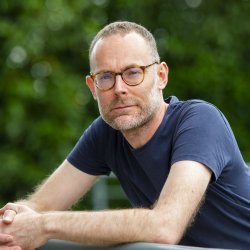Developing a model virus system to better understand airborne transmission of COVID-19
In this project, we will develop a model virus system and try and answer questions such as, which part of the virus is the weak link, how can we change the environment to destroy more viruses?
Start date
1 October 2022Application deadline
Funding information
This project is for a student with a UK nationality, EU settled, pre-settled status or indefinite leave to remain. The student will be covered with a full tuition fee and a stipend of £19,062 per year.
About
Motivation: COVID-19 is estimated to have killed over 10 million people and caused huge worldwide disruption to both people’s lives and to economies. The SARS-CoV-2 virus transmission is known to be airborne, which means it is spread via infected people breathing out tiny respiratory droplets containing viruses. Both transmission patterns of COVID-19, and direct measurements, show that this virus – a hundred-nanometre nanoparticle of lipids, proteins and RNA can survive rapid drying process of small respiratory droplets. Since the physical environment around the virus changes rapidly during the drying process, such a successful spread of airborne virus is mysterious. However, our understanding on the drying process and its effect on the stability of a virus is limited due to the difficulty of testing virus survival. In this project, we will develop a model virus system and try and answer questions such as, which part of the virus is the weak link, how can we change the environment to destroy more viruses?
The project: In this project, you will have an exciting opportunity to make a model virus system and test its survival during rapid drying process. The model viral particle (MVP) will be a small vesicle - i.e., a microscopic spherical shell of lipid-molecules encapsulating synthetic RNA molecules. A solution containing MVPs will be sprayed inside an environment-controlled chamber to mimic drying process of viruses at different relative humidity and temperature. If the MVP is destroyed during the process, so will the RNA molecules. You will quantify the survival rate of the MVPs using quantitative reverse transcription PCR.
Training and development opportunity: Through this multidisciplinary project, you will be given an opportunity to build your skills and knowledge on cutting-edge topics in physics and biology including membrane biophysics and RNA biology. In addition, you will be provided with training on instruments such as qPCR machine and transmission electron microscopy. There will be an opportunity to collaborate with international researchers and present your result at national/international conferences during the PhD. Finally, you will be supported by the supervision team on building your skills as an independent researcher.
The environment: The University of Surrey is at the heart of the town of Guildford. We have a highly diverse research environment with a good gender and ethical balance. The student will have access to the newly installed transmission electron microscope and biochemistry laboratory space for the project with ample supports from professional research staff.
The candidate: We are looking for an enthusiastic, self-motivated student to work on this exciting project. The ideal candidate will have experience in wet-lab experiments, good communication skills in English and most importantly, a determined mindset to pursue the research project. We are particularly interested in candidates with previous experience in RNA experiments and/or membranes/lipids
The supervision: The project will be supervised by Dr Wooli Bae and Dr Richard Sear at the University of Surrey. Wooli Bae is a lecturer at the Department of Physics with the research area of experimental nucleic acid nanotechnology and membrane biophysics. Richard Sear is a Reader and head of the Soft Matter Physics group studying theoretical physics on diffusion processes.
Related links
Superior Covid protection from better face masks, research showsEligibility criteria
Applicants are expected to hold a first or upper-second class degree in a relevant discipline (or equivalent overseas qualification), or a lower second plus a good Masters degree (distinction normally required).
English language requirements
IELTS minimum 6.5 overall with 6.0 in Writing, or equivalent
How to apply
Interested candidates are encouraged to contact Dr Wooli Bae (w.bae@surrey.ac.uk) or Dr Richard Sear (r.sear@surrey.ac.uk) as soon as possible, as the funding is competitive. Applications should be submitted via the Physics PhD programme page on the "Apply" tab.
In place of a research proposal you should upload a document stating the title of the project that you wish to apply for and the name of the relevant supervisor. The application should be submitted as a single PDF file containing CV, personal statement (one page maximum) and contacts for two references.
Studentship FAQs
Read our studentship FAQs to find out more about applying and funding.
Application deadline
Contact details
Wooli Bae
Research

Studentships at Surrey
We have a wide range of studentship opportunities available.

